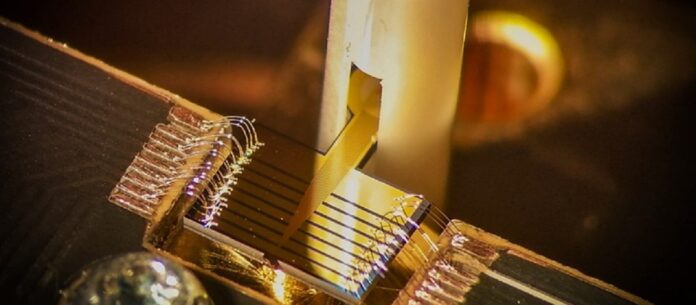Quantum key distribution is the most viable scheme to guarantee information security in the presence of large-scale quantum computers. However, its secret key rates remain limited to 10 Mbps due to bottlenecks on the receiver side. A new study describes a custom multipixel superconducting nanowire single-photon detector designed to guarantee high count rates and precise timing discrimination.
Quantum physics can combat data theft by encoding information in single particles of light and circulating them through an optical fiber. The performance of single-photon detectors, in particular, could be better for the broad implementation of this telecommunications technology. A team from the University of Geneva (UNIGE) and the company ID Quantique have increased their speed by a factor of twenty. This innovation, to be discovered in, makes it possible to achieve unprecedented performances in quantum key distribution.
Quantum Cryptography or Quantum Key Distribution allows two parties to generate shared secret keys and transmit them via optical fibers in a highly secure way. This is because the laws of quantum mechanics state that measurement affects the state of the system being measured. Thus, if a spy tries to measure the photons to steal the key, the information will be instantly altered, and the interception will be revealed.
However, the speed of the single-photon detectors used to receive the information is limited by 30 nanoseconds, limiting the throughput of the secret keys to 10 megabits per second.
Scientists in this study overcome this limit by developing a better-performing detector. It can count twenty times faster than a single wire device.
Fadri Grünenfelder, a former doctoral student in the Department of Applied Physics at the UNIGE Faculty of Science and the first author of the study, explains, “Currently, the fastest detectors for our application are superconducting nanowire single-photon detectors. These devices contain a tiny superconducting wire cooled to -272°C. If a single photon hits it, it heats up. It ceases to be superconducting for a short time, thus generating a detectable electrical signal. When the wire becomes cold again, another photon can be detected.”
They achieved record detection rates by integrating fourteen nanowires into their detector, which can count twenty times faster than a single-wire device. The nanowires used are also shorter, which helps to decrease their recovery time. The researchers were able to generate a secret key at a rate of 64 megabits per second over 10 km of fiber optic cable, five times the performance of current technology over this distance.
Hugo Zbinden said, “Our detectors can count twenty times faster than a single-wire device. If two photons arrive within a short time in these new detectors, they can touch different wires, and both be detected. With a single wire, this is impossible”.
These results open up possibilities for ultra-secure data transport, which might benefit banks, healthcare systems, governments, and the military. They can also be used in other domains where the detection of light is essential, such as astronomy and medical imaging.
This result paves the way for secret key-demanding applications like real-time, one-time-pad secured video encryption in a metropolitan area. These results open new perspectives for quantum cryptography.
Journal Reference:
- Grünenfelder, Boaron, et al. Fast single-photon detectors and real-time key distillation enable high secret-key-rate quantum key distribution systems.Nature Photonics. DOI: 10.1038/s41566-023-01168-2
